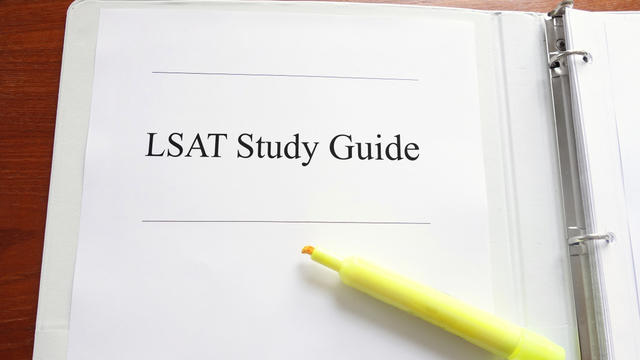What sets the Reading Comprehension section of the LSAT Test apart from the other sections is its highly subjective nature. It’s difficult to pinpoint one specific technique to use on this section because everyone reads and digests information differently. It’s not as straightforward as memorizing a few formulas or remembering how to properly diagram specific Logic Game conditions.
Generally, I can say the best advice is to forgo reading between the lines—an ailment common to many literature-based majors out there. The skill LSAC is looking for in the Reading Comprehension section is the ability to quickly digest dense literature, while simultaneously being able to analyze, e.g. main point, tone, etc.
Keep it simple. Don’t over-annotate the passage. You want your annotations to be easily identifiable markers of specific points and ideas in the passage.
Don’t assume. If the passage doesn’t specifically say it, then don’t choose it as your answer. A tip I always give students is if you can’t find a specific line that corresponds to the answer you’ve selected, then it isn’t the correct answer. You should get into the habit of identifying these corresponding line-numbers when you review the section; LSATMax actually highlights all the corresponding line-numbers for its students. It’s a great way to double-check your answers and see just how straightforward the Reading Comprehension section can be.
Now, even though this section is highly subjective, I thought it’d be a good idea to show you how I would go through a specific passage to give those of you who need an idea of how to approach these passages a good base to work off of. I will be referencing the first passage of the June 2007 LSAT. If you do not have that handy, go ahead and download our free app on the Apple App Store. The free content includes the entire June 2007 LSAT along with many other resources, including daily drills. Read the passage once on your own and then continue reading this post.
Okay, so as I read through any passage, I make a quick notation on the left-hand side of each paragraph marking what the purpose of each paragraph is. I find that this technique helps me focus on what I am reading as I create an outline of the structure of the passage. Next to the first paragraph I wrote: “Intro: deep rift between poetry and fiction in the United States.” Now, I just fibbed a little. That’s not literally what I wrote. Throughout my LSAT prep, I created my own shorthand for the passages to save time, and keep the page clean and organized. What I actually wrote was “I: deep rft b/t p & f in US.” Remember, this is all subjective. So, if you don’t like shorthand, that’s fine. The point is to keep it simple and not waste your time rewriting sentences.
Next to the second paragraph I wrote: “Why? U.S. culture suspicious of generalists.” Next to the third paragraph I wrote: “Several writers do both. Ex: Rita Dove. Germany.” In case you were wondering, I included “Germany” because I thought it was an oddly specific fact about Dove that may come up later—literally creating a marker for myself to come back to it if needed. Next to the fourth paragraph I wrote: “Dove believes that it makes no sense. Bridges gap between poetry and fiction through writing and fusion.” Again, I want to remind you that I write all of this in shorthand. This last sentence on my page literally looks like: “D blvs mks no sense. Bridges gap b/t p & f thru wrtng & fusion.”
The other thing I do while I am reading is circle names I see. This helps me direct my gaze towards places in the passage where people are specifically referenced. Again, the idea is to quickly and efficiently map out where important things in the passage may be.
I also highlight the author’s tone by underlining specific words I think represent how the author feels about what he is talking about. Usually the words I underline are descriptive. In this passage, I underlined “Fortunately” in line 21 (because it signifies that the author is happy about the trend of writers crossing generic boundaries), “gentle incredulity” in lines 28-29 (because it was clear that the author liked Dove and so it was likely that however Dove felt about the topic, the author would agree), “they would not understand our restrictiveness” in lines 35-36 (again because I felt it represented the author’s tone), and “It makes little sense” in line 37 (same reasons as above).
Once I finish reading the passage, I make sure to note what the main point, tone, and purpose of the passage are:
Main Point: The recent trend of writers in the U.S., like Rita Dove, who have begun to fuse poetry and fiction, represents the breaking of the widespread attitude of suspicion against generalists in the U.S.
Tone: Surprised/incredulous at the lack of fusion of genres. Happiness towards the new trend
Purpose: Inform the reader about a new trend of writers emerging in the U.S.
I don’t take the time to write those three things down, but I make sure to reiterate them in my head before I hit the questions. So that’s how I approach each passage. If this method doesn’t work for you, that’s perfectly fine! You want to approach the passages in the way that suits you best. If you need more annotations to thoroughly understand an article, then go for it. Likewise, if you need less, then that’s your prerogative. Find what works for you and practice it continuously.
I hope I gave you a good idea of one way to approach this section. Remember, the best way to increase your score on this section, outside of consistent practice during your LSAT prep, is to read more in your free time. LSATMax believes in the power of extra reading so much so that our full course includes a subscription to The Economist! Hope that gave you all a good glimpse into one way you can annotate a passage! Have a great Tuesday!
Happy Reading!










